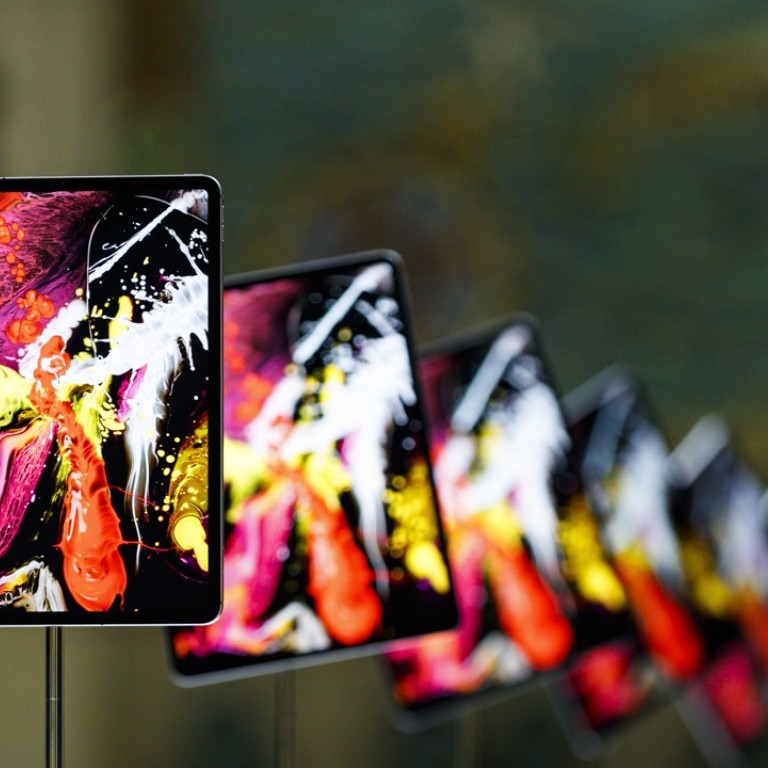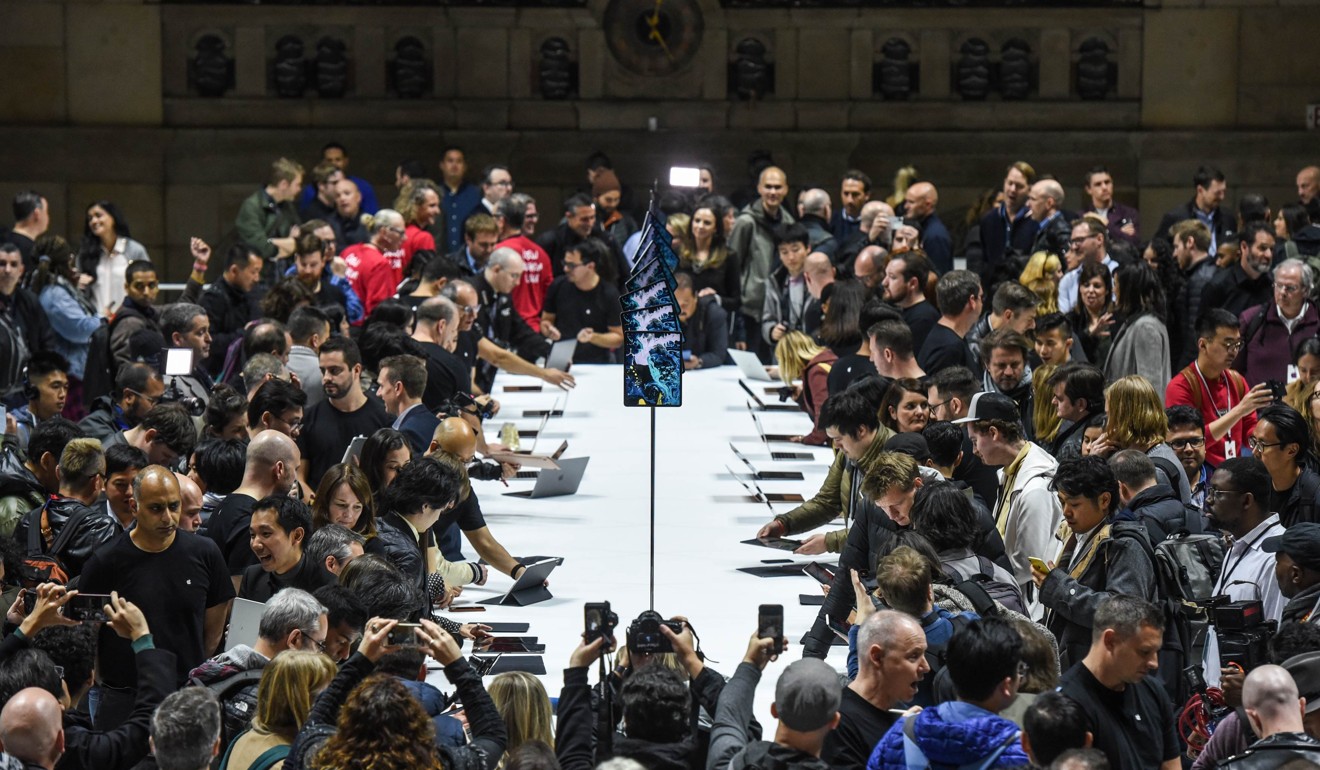
Can new Apple iPad Pro really be anything you need it to be? Frankly, no
- Apple’s updated iPad Pro is impressive and versatile, but relying on a touch screen for precision tasks may be a stretch for some users
- New MacBook Air an alternative – a pricey one, though
Two slabs of glass and metal, two different tales.
Apple shared its vision for the future of portable computers in its latest product launch: a super-powerful redesigned iPad Pro you operate with fingers and a stylus and, for those who doubt a tablet can replace a laptop, a refresh of its classic MacBook Air.
I had a chance to try both the US$800 iPad Pro and US$1,200 MacBook Air after Apple’s presentation. Each was given a beautiful new design, renewed purpose – and a 20 per cent price hike.
The iPad Pro stole much of the spotlight, because it’s getting the most changes. The big touch screen can do things you can’t on a Mac, but it may be the less practical computer for many.

The new Pro takes design cues from the latest iPhones. The home button has been replaced with a swipe-up gesture that will be intuitive to anyone who’s used an iPhone X. Instead of a fingerprint reader, it now unlocks with FaceID, Apple’s facial-recognition technology, adapted for the iPad to work in both vertical and horizontal orientations. That was speedy in demonstrations, but is limited to just two faces per device.
With the home button out of the way, Apple trimmed the iPad Pro’s margins to make it slightly smaller and more comfortable in your hands. Like previous iPad Pros, the new devices come in two screen sizes, 11 inches (US$800) and 12.9 inches (US$1,000); the latter is about the size of an A4 sheet of paper, and an improvement over the original 2015 iPad Pro.
Most intriguing is Apple’s evolving vision for what you can do with the iPad Pro.

Sold for more than double the price of a basic US$330 iPad, it has come a long way since being an oversized big brother to the iPhone. On stage, Apple described the iPad Pro as a “magical piece of glass that can be anything you need it to be”.
Translation: the iPad Pro is a powerful, flexible computer that you can carry around. With a new, Apple-designed processor and neural engine, Apple says the Pro is faster than 92 per cent of portable PCs on the market today.
Can it really be “anything” you need it to be? With a keyboard case (US$200), it can stand upright like a laptop, though it sits less rigidly on your lap than a traditional notebook. Users can scribble, paint and do other activities requiring precision right on the screen itself with a new Apple Pencil stylus (US$130) that magnetically attaches to the edge of the screen.
The iPad Pro can even plug into an external monitor (via a new USB-C style port also used to charge) to become a portable graphics workhorse.

Executives from Adobe showed how it could be used to edit a gargantuan image with a new, full-powered iPad version of its popular Photoshop application.
But you know what I quickly missed in my hands-on time? A mouse or track pad. You still have to do most things on an iPad by touching its screen – no fun for precision tasks like spreadsheets. To me, that stops the Pro short of transforming into the kind of computer where I can sit upright at a desk and burn through work. Call me old-fashioned.
If you share that concern, too, Apple isn’t about to lose the chance to sell you something else. Enter the refreshed MacBook Air, the beloved Apple laptop.

Apple breathed new life into the ageing Air, but also increased the price from US$1,000 to US$1,200.
The stand-out feature is a higher-resolution, 13-inch “retina” quality screen, which features four times the pixels. Despite that power-demanding leap, Apple says the Air’s 12-hour battery life remains about the same – and superior to the more powerful MacBook Pro that costs US$100 more.
The new Air, which weighs 1.25kg (2.75 pounds), is also 113 grams lighter than the MacBook Pro. When I held one in each hand, I could feel the difference.
The best just got a lot better: Apple Watch Series 4 review
The refresh also includes a fingerprint reader for securely unlocking the computer, making payments and logging into apps. But some won’t be happy that the new model lacks the common USB-A style port and an SD-card reader. Instead, it has two smaller USB-C type ports that work for charging and plugging in external devices. (At least there’s still a headphone jack.)
The Air has a bigger problem: It looks expensive in the competitive world of Windows PCs and Chromebooks, yet has few unique hardware capabilities. While the Mac operating system has many advantages and loyal fans, the Air’s improvements are mostly the minimum Apple could get away with.
A decade ago, when Apple co-founder Steve Jobs first introduced the Air by pulling it out of a manila envelope, he redefined the design of portable computers. If you want Apple’s vision today, look to the iPad Pro.

